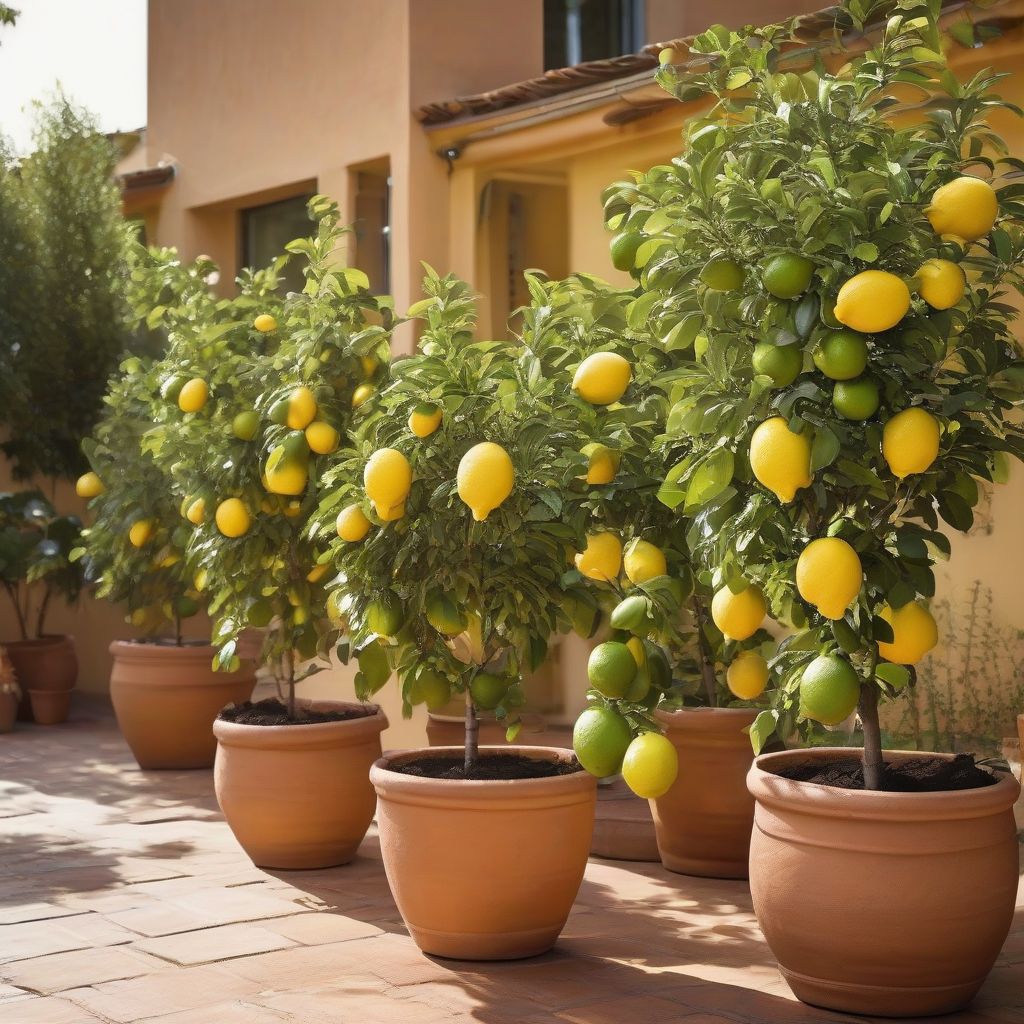Imagine stepping onto your balcony and plucking a juicy, sun-ripened strawberry, warm from the day’s sunshine. Or perhaps, reaching out your kitchen window to snip fresh herbs for tonight’s dinner. Growing your own food is incredibly rewarding, and with a few simple techniques, you can enjoy a bountiful harvest of delicious fruits right from your patio, balcony, or even a sunny windowsill. Container gardening opens up a world of possibilities, allowing even those with limited space to enjoy the fruits of their labor.
Choosing the Right Container and Fruit
The first step to successful container fruit gardening is selecting the right container and fruit varieties. Don’t worry, it’s not as complicated as it sounds!
Container Selection: Size Matters!
When it comes to container size, bigger is usually better, especially for larger fruit plants like dwarf citrus trees or blueberries. A larger container provides more room for roots to grow, which translates to healthier plants and higher yields. Here’s a quick guide:
- Small fruits (strawberries, herbs): 6-12 inch pots
- Medium fruits (peppers, dwarf strawberries): 12-18 inch pots
- Large fruits (dwarf citrus, blueberries): 15-24 inch pots or larger
Material matters too!
- Plastic pots: Lightweight, affordable, and retain moisture well.
- Terracotta pots: Porous, allowing for good air circulation but may require more frequent watering.
- Wooden containers: Aesthetically pleasing and provide good insulation, but may deteriorate over time.
Drainage is Key! Ensure your chosen container has adequate drainage holes to prevent waterlogging and root rot.
 Fruit trees thriving in pots.
Fruit trees thriving in pots.
Picking Your Fruit: Selecting the Right Varieties for Container Gardening
Not all fruits are created equal when it comes to container gardening. Look for “dwarf” or “patio” varieties specifically bred for smaller spaces. Here are some top picks:
- Strawberries: Everbearing varieties produce fruit throughout the summer.
- Blueberries: Opt for compact, self-pollinating varieties.
- Citrus: Dwarf lemon, lime, and orange trees add a touch of the Mediterranean to your space.
- Figs: Choose a variety that ripens fruit on new wood for continuous harvests.
- Herbs: Mint, basil, rosemary, and thyme thrive in containers.
Providing Optimal Growing Conditions
Just like us, fruits have their preferences! Providing the right environment is crucial for them to thrive in containers.
Sun-Kissed Delights: Light Requirements
Most fruit-bearing plants need at least 6-8 hours of direct sunlight daily. South-facing balconies or patios are ideal. If you have limited sunlight, don’t worry! There are still options:
- Choose shade-tolerant varieties: Some herbs, like mint and parsley, tolerate shadier conditions.
- Utilize reflective surfaces: Place white or light-colored surfaces around your plants to reflect light.
The Perfect Blend: Selecting the Right Soil
The soil is the foundation of your container garden. It provides essential nutrients and support for your plants.
- Use a well-draining potting mix: Avoid using garden soil, which can become compacted in containers.
- Add organic matter: Compost or aged manure will enrich the soil and improve drainage.
- Consider a slow-release fertilizer: This will provide a steady supply of nutrients throughout the growing season.
The Elixir of Life: Watering Wisely
Proper watering is crucial for container-grown fruits. Here are some tips:
- Water deeply and evenly: Water until it drains from the bottom of the pot.
- Check the soil moisture regularly: Stick your finger into the soil; if it’s dry to the touch, it’s time to water.
- Adjust watering frequency based on weather conditions: Plants in terracotta pots may need more frequent watering than those in plastic pots.
- Consider a self-watering system: This can be especially helpful if you travel frequently.
Nutritious Nosh: Feeding Your Fruiting Plants
Container-grown fruits have limited access to nutrients compared to their in-ground counterparts. Regular feeding is essential for healthy growth and abundant fruit production.
- Use a balanced, water-soluble fertilizer: Look for a fertilizer specifically formulated for fruits and vegetables.
- Fertilize every 2-4 weeks during the growing season: Reduce or stop fertilization during the dormant season.
- Avoid over-fertilizing: This can lead to salt buildup in the soil and damage plant roots.
Nurturing Your Container Fruit Garden: Ongoing Care
Creating your container fruit garden is just the beginning! Ongoing care and attention will ensure a bountiful harvest for years to come.
Pruning for Success
Pruning helps maintain the shape and size of your plants while promoting airflow and fruit production.
- Prune in late winter or early spring: Before new growth emerges.
- Remove dead, damaged, or diseased branches: Cut back to healthy wood.
- Thin out overcrowded branches: This improves light penetration and air circulation.
Protecting Your Plants: Pests and Diseases
Container-grown fruits are generally less susceptible to pests and diseases than in-ground plants, but vigilance is key.
- Inspect your plants regularly: Look for signs of pests or diseases, such as discolored leaves, webbing, or holes.
- Treat problems promptly: Use organic or chemical pest control methods as needed.
- Practice good sanitation: Remove fallen leaves and debris to prevent disease spread.
Overwintering Your Container Fruit Garden
Depending on your climate, you may need to protect your container fruits from freezing temperatures during the winter months.
- Move pots to a sheltered location: A garage, shed, or unheated basement can provide adequate protection.
- Insulate pots: Wrap them in burlap, bubble wrap, or blankets.
- Water less frequently: Keep the soil barely moist during the winter dormancy period.
[amazon bestseller=”fruit tree pots”]
Reaping the Sweet Rewards: Harvesting Your Container-Grown Fruit
There’s nothing quite like savoring the fruits of your labor—literally! Here’s how to know when it’s time to harvest your container-grown bounty:
- Check for ripeness cues: Each fruit has its own indicators, like color change, softness, or aroma.
- Harvest regularly: Picking ripe fruit encourages continued production.
- Enjoy fresh or preserve your harvest: From jams and jellies to pies and smoothies, the possibilities are endless!
Conclusion: Savor the Joys of Container Fruit Gardening
Growing fruit in containers is a rewarding and accessible way to enjoy fresh, homegrown produce no matter your space limitations. By following these tips and tricks, you can create a thriving container fruit garden that will provide you with a bountiful harvest for years to come. So, grab your gardening gloves, choose your favorite fruits, and get growing! You’ll be amazed by what you can achieve in even the smallest of spaces.
What are your favorite fruits to grow in containers? Share your experiences and tips in the comments below!
